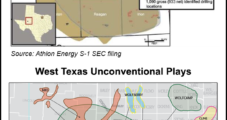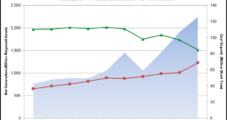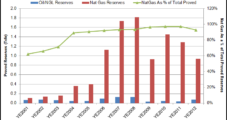Exco Resources Inc. is paying Chesapeake Energy Corp. $1 billion for something wet and something dry: about 55,000 acres in the liquids-rich Eagle Ford Shale of Texas and about 9,600 acres in the drier Haynesville Shale in North Louisiana.
Developed
Articles from Developed
QEP’s Initial Bakken Drilling Results Get Rave Reviews
Denver-based exploration and production (E&P) independent QEP Resources Inc. reported encouraging results from its first four-well pad drilling on recently acquired South Antelope property in the Williston Basin in North Dakota. QEP said it also completed nine wells — four in the Bakken and five in the Three Forks formations on the Fort Berthold Indian Reservation.

Wolfberry-Focused Independent Files for $345M IPO
Fort Worth-based Athlon Energy Inc., which is focused on the Wolfberry play in the Permian Basin, has filed for an initial public offering (IPO) expected to be worth $345 million.
Northeast Ohio Group Devises Midstream Development Plan
A group of elected officials, economic development and real estate experts in northeastern Ohio have developed a proposal to create a network of wet gas gathering lines and other infrastructure in the Utica Shale, using the region’s steel industry, abandoned or partially used rail lines and existing highways.

Voser on Shale: The Revolution Should Be Exported
America’s “shale revolution,” combined with increased Gulf of Mexico oil production, the potential for major deposits in the Arctic, and growth in tight and heavy oil, including oilsands, makes North America’s energy picture much brighter than it was not that long ago, Royal Dutch Shell plc CEO Peter Voser said recently at the Chief Executives Club of Boston.
Williams Exec: ‘Crackers or Bust’ as Ethane Production Booms
While the debate rages over whether exporting liquefied U.S. natural gas is a good idea, stocks of natural gas liquids (NGL) are so abundant, export of some is viewed as a necessity. And in the United States, more chemical sector demand can’t come fast enough.
Industry Brief
A report developed by the Eagle Ford Shale Task Force released Tuesday outlines the history and facts of the booming South Texas oil and gas play in 155 pages. The report addresses topics such as workforce development, infrastructure (pipelines, roads and housing), regulations, water quality, economic benefits, flaring and air emissions, as well as issues affecting landowners, mineral owners and royalty owners. The task force was formed by Railroad Commission of Texas Commissioner David Porter in 2011 (see Shale Daily, July 29, 2011). “In 2011, the Eagle Ford Shale supported almost 50,000 full-time jobs in 20 counties and contributed over $25 billion dollars to the South Texas economy,” the report said. “From 2011 to 2013, daily hydrocarbon liquid production, including natural gas liquids, increased from 100,000 to 700,000 b/d. These developments have made South Texas one of the most prominent energy-producing regions in the United States.”
NGV Truck, Bus Business Speeding Ahead
Nearly half the liquefied natural gas (LNG) fueling stations for natural gas vehicles (NGV) now being developed are in the United States, according to a recent report by Navigant Consulting’s Pike Research unit. Globally there are 117 LNG stations, while compressed natural gas (CNG) stations number more than 20,000.
Colorado Producers Challenge Longmont’s Fracking Ban
The Colorado Oil and Gas Association (COGA) late Monday filed a lawsuit in a county district court seeking to invalidate the city of Longmont’s ban on hydraulic fracturing (fracking) within its city limits. COGA told the court the resolution essentially is a ban on oil/natural gas drilling.
Industry Brief
The North Dakota Department of Mineral Resources (DMR) has developed a Internet-based mapping tool to help community officials plan for road maintenance, dust control and other traffic-related problems that accompany expanded oil and natural gas development in the Bakken Shale and adjacent formations. The enhanced mapping includes information and locations for “permit status before spud” to provide the pre-drilling status for newly permitted well sites. It provides a new layer to the DMR oil/gas division’s GIS mapping system, enabling planners to identify where truck traffic could be most concentrated for a given period. “Users will be able to identify the operator of the rig and or well, as well as possible time frames when permits could be drilled,” said Attorney General Wayne Stenehjem. The GIS map server is available at the DMR website as part of the North Dakota Industrial Commission (www.dmr.nd.gov/oilgas).





